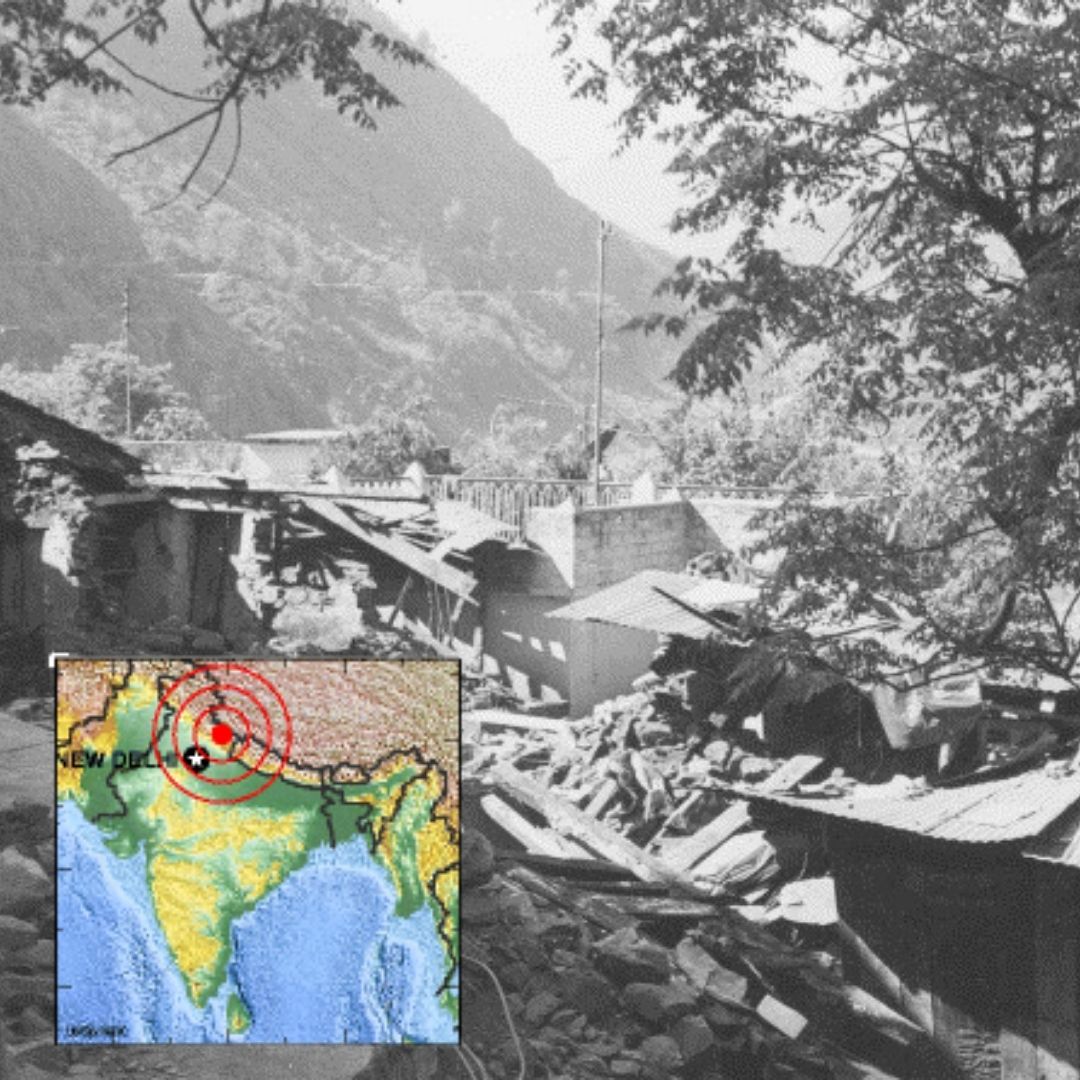
Image Credits: Wikipedia, ScienceDirect
Remembering 1999 Deadly Chamoli Earthquake That Killed Over 100 People, Collapsed About 2600 Houses
Uttarakhand, 29 March 2022 7:49 AM GMT
Editor : Shiva Chaudhary |
A post-graduate in Journalism and Mass Communication with relevant skills, specialising in content editing & writing. I believe in the precise dissemination of information based on facts to the public.
Creatives : Tashafi Nazir
For most people, journalism sounds hectic and chaotic. For her, it's a passion she has been chasing for years. With an extensive media background, Tashafi believes in putting efforts on presenting a simple incident in the most interesting way.
The earthquake was the strongest to hit the foothills of the Himalayas in more than ninety years. Several hundred people were injured in the disaster, and approximately 50,000 houses were damaged. More than 2,000 villages were affected by the earthquake.
The Garhwal-Kumaun region of Western Himalayas was jolted by a moderate earthquake, measuring 6.8 on the Richter scale, on March 29, 1999, at around 12:30 midnight. The earthquake that occurred in the Chamoli district in Uttar Pradesh (now in Uttarakhand) killed nearly 103 people.
Maximum effects of the quake were noted in Chamoli, where nearly 2600 houses collapsed, and over 10,000 were severely damaged.
In all, nearly 1,256 villages were affected. A few buildings far away from Delhi sustained non-structural damages. No instances of liquefaction were reported, and longitudinal cracks in the ground were seen in some locations in the affected area.
What Was The Cause?
The Himalaya Range has been undergoing crustal shortening along the 2,400 km long northern edge of the Indian Plate, resulting in the formation of numerous thrust faults, including the Main Central Thrust (MCT), the Main Boundary Thrust (MBT) and the Main Frontal Thrust (MFT). The MCT consists of three sub-thrusts: MCT I, MCT II and MCT III. Most of the earthquakes have occurred along these thrust faults. Reportedly, the Chamoli earthquake in 1999 was associated with these fault systems.
According to Wikipedia, the earthquake was the strongest to hit the foothills of the Himalayas in more than ninety years. Apart from the Chamoli district, the earthquake also affected five other districts of Uttar Pradesh, including Rudraprayag, Bageshwar, Tehri Garhwal, Uttarkashi and Pauri Garhwal (all in Uttarakhand now).
Among these districts, Chamoli and Rudraprayag were the worst hit. Aftershocks continued, and most of them occurred in the east of Chamoli. Officials from Pakistan reported that the tremors were also felt in Lahore and Gujranwala.
Damages And Casualties
Severe ground deformations resulted from the earthquake. The formation of ground fissures was reported in many areas. Landslides and changes in the groundwater flow were also witnessed. Well-developed ground cracks were reported in Gopeshwar, Bairagna and Chamoli. Cracks were observed on asphalt roads at several locations, and landslips cut off parts of Mandakini and Mandal valley and other major roads.
The death toll was over 103. In addition, several hundred people were injured, and approximately 50,000 houses were damaged. More than 2,000 villages were affected by the earthquake. Electricity, communication and water supply were also severely affected by the earthquake, especially in Gopeshwar, Chamoli town and the Okhimath region of Rudraprayag district. Almost all the houses and shops in Chamoli built on slopes in the lower part of the town were destroyed.
The bridge deck of a pedestrian suspension bridge located near Bairagna developed lateral buckling, and the cables of the bridge were loosened. Water pipelines in Gopeshwar and Chamoli towns were damaged, affecting water supply due to landslides caused by the earthquake. The concrete-lined canals of the irrigation network in the affected area sustained some cracks.
In Delhi, many buildings sustained non-structural damage. According to Dr B.L. Wadhera, who filed PIL in the Delhi High Court, cracks developed in Delhi's Shastri Bhavan, which houses many Union Ministries. Damage occurred in many buildings in Dehradun, and a few old buildings of the Survey of India sustained the collapse of gable masonry. Cracks were suffered along the junctions between the pitched roof and the masonry walls.
Rescue Operations
Rescue operations were hampered by landslides, loss of electrical power and the failure of communication links with Chamoli. Many road workers got involved in clearing landslide debris from a 16 km stretch of road leading to the worst-affected area. Locals carried out search and rescue operations, whereas the Indian Army led rescue efforts, and Paramilitary personnel were also called in to aid. The Army used helicopters to ferry in necessary supplies. Food and other essential items were air-dropped to villages that lacked motorable roads and where roads were damaged due to landslides. Locals organised a committee to make sure that those most affected received food.
According to one research paper, significant aftershock activity, which included several events of M >5, created a lot of fear amongst the residents. They hesitated to sleep indoors even when their houses had little or no damage. Speculations about an impending large earthquake added to the anxiety and panic. Massive forest fires, which are common during this time of the year, drove some wild animals toward the villages and towns, adding insecurity among people. Impending monsoons in the next two months remained a significant concern; slope failures and additional damage to partially damaged houses were feared.
Also Read: Saviour In Life And Death! Looking Back At The History Of Ambulance Services In India
 All section
All section














